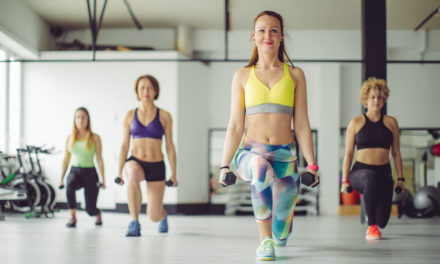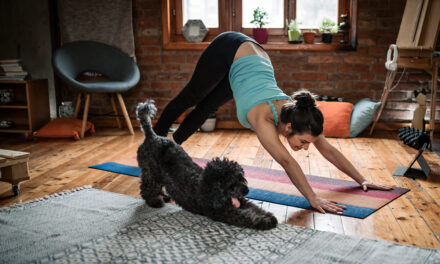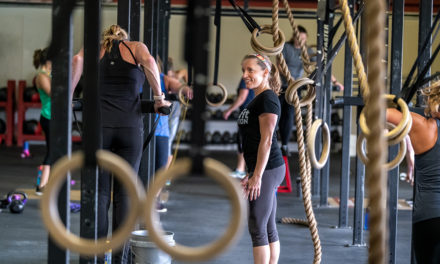We tend to think of yoga as a stress-relieving activity, instead of one in which you can build a strong, healthy body. It’s time to rethink that plan because yoga can give us the strength we want and the self-introspection we need.
Last year, Hallie Fischer suffered from nagging back pain that just wouldn’t go away. The 30-year-old had always been active, playing tennis at Lower Moreland High School and running on and off since she was 16 years old. For the past 7 years she’d been hitting the gym daily, and like clockwork she did at least 40 minutes of cardio, a little bit of ab work, and some lifting. “I felt that if I didn’t put in an hour at the gym I was going to gain weight and not be in shape,” says Fischer. “But I was just running myself into the ground.” Her back was telling her to try something new.
Like most women, she’d dabbled in yoga over the years, but she never felt like it delivered the same results as the gym did. But last summer, in need of a solution, Fischer ditched the gym for yoga. “I got a great workout my first time at a new yoga studio,” says Fischer. “I left dripping sweat and feeling so strong. So I started going more and more and I stopped caring about the gym.”
After a few months, her back pain was gone, and she felt as fit and healthy as she’s ever been. More importantly, she was excited about exercising again.“I had this feeling of guilt when I did yoga instead of going to the gym,” says Fischer. Now, instead of tracking her progress by counting reps, increasing weights, or going further and faster on the treadmill and elliptical, Fischer has found a new measure of fitness. “I’ve learned how to slow my mind and feel good in my body.”
How to strike a pose
These poses are recommended by Cathy Madeo to build strength and prepare you for more challenging postures. Each pose is usually held from one breath to three to five breaths.
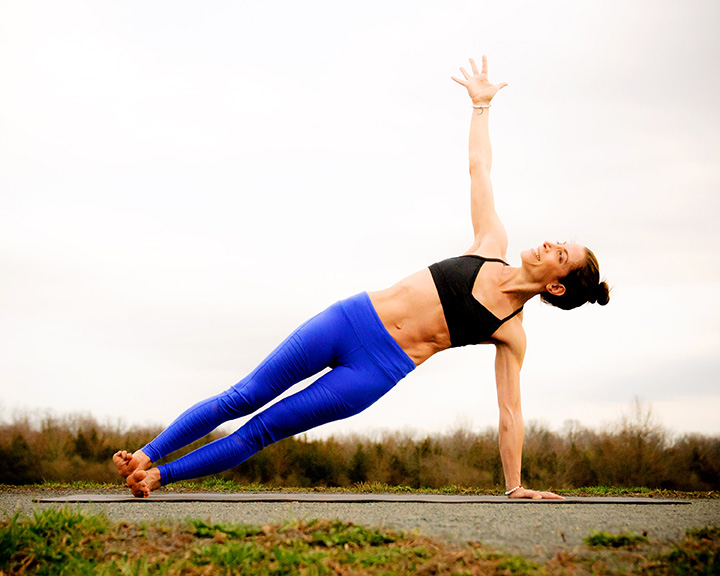
Side Plank
Starting on your side, prop yourself up with your arm and keep your legs straight so your body forms a diagonal line. Reach your other arm into the sky and brace your abs while making sure your hips and knees stay off the floor. “This pose works both internal and external obliques, transverse abdominus, triceps, and shoulders.”
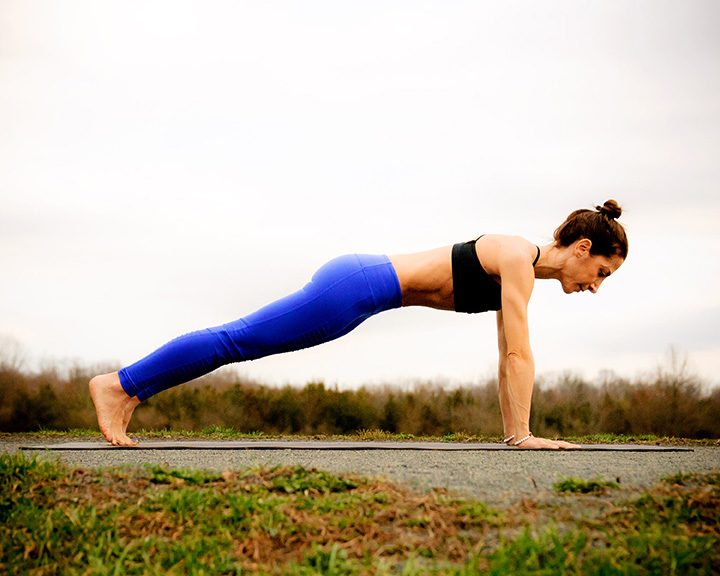
Plank
Start in pushup position on the floor. Your wrists should be directly beneath your shoulders, and your body should form a straight line from your head to your feet. “Plank is great for working all the core muscles and also strengthens the triceps and shoulders,” says Madeo. “And since it works all of the muscles surrounding the spine, it can improve posture.”
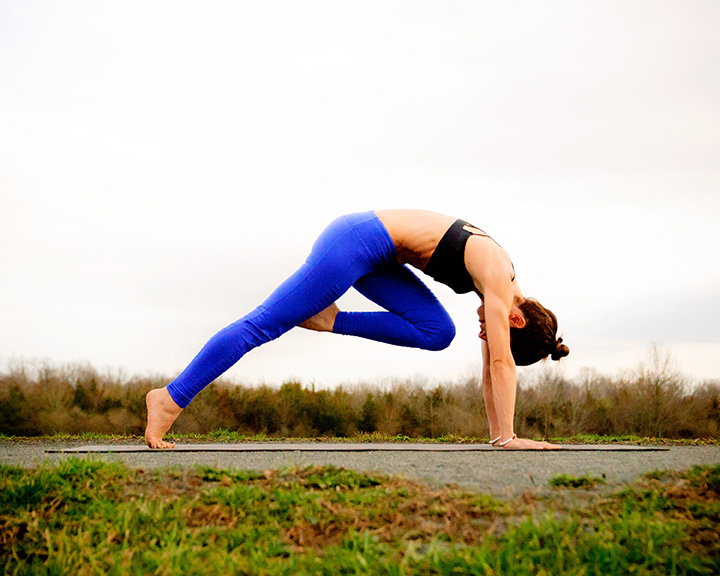
Knee to Nose
Starting from plank pose, lift your foot and draw your knee toward your chest while keeping your hips in line with the rest of your body and rounding your upper back toward the ceiling. “This pose builds up the strength you need to move your body into a high plank position,” Madeo explains. “It’s also great for your core.”
Yoga Playlist
Habib Koite
Fimani
4:28
Only You
Portishead
4:59
Strong My Roots / Ganapati
Deva Premal & Miten
7:20
The Moon
The Swell Season
4:44
Sea Wolf
Dear Fellow Traveller
3:41
Gayatri Mantra
Deva Premal
9:49
Standing Strong
“Most women get into yoga because they want to relax and be more flexible, and they completely overlook the strengthening aspect of it,” says Cathy Madeo, an instructor at Honor Yoga in Pennington, N.J. who has been teaching yoga for more than 11 years. “There’s so much that goes into the regular practice of yoga and in learning the different postures that build overall fitness.” And, she adds, the strength you gain through yoga is built alongside gains in flexibility.
Since yoga uses your own body for weightlifting purposes, it offers a reliable way to tone muscles and get fit. Yoga gets results because it involves compound movements, which means numerous joints and muscles are engaged in each move. “In yoga, one muscle turns on so another can lengthen, and this makes you stronger while building openness in your joints,” says Sephra Albert, a massage therapist who teaches anatomy for yoga instructors-in-training. “And when you move in and out of postures dynamically, you challenge your muscles to maintain stability and that also builds strength.” She adds that more vigorous styles of yoga can even raise your heart rate and burn extra calories, though not as much as running does.
While the fitness aspects of yoga are often overshadowed by the restorative ones, new research has cast the discipline in a new light. A study published last year in the European Journal of Preventive Cardiology found that movement-based yoga styles like Vinyasa and Iyengar reduced heart disease risk factors such as excess body weight and high blood pressure. And a recent study published by Columbia University also found that yoga increased bone density in the spine and femurs. The study found that yoga strengthened bones while also stimulating bone-making cells through three-dimensional movement.
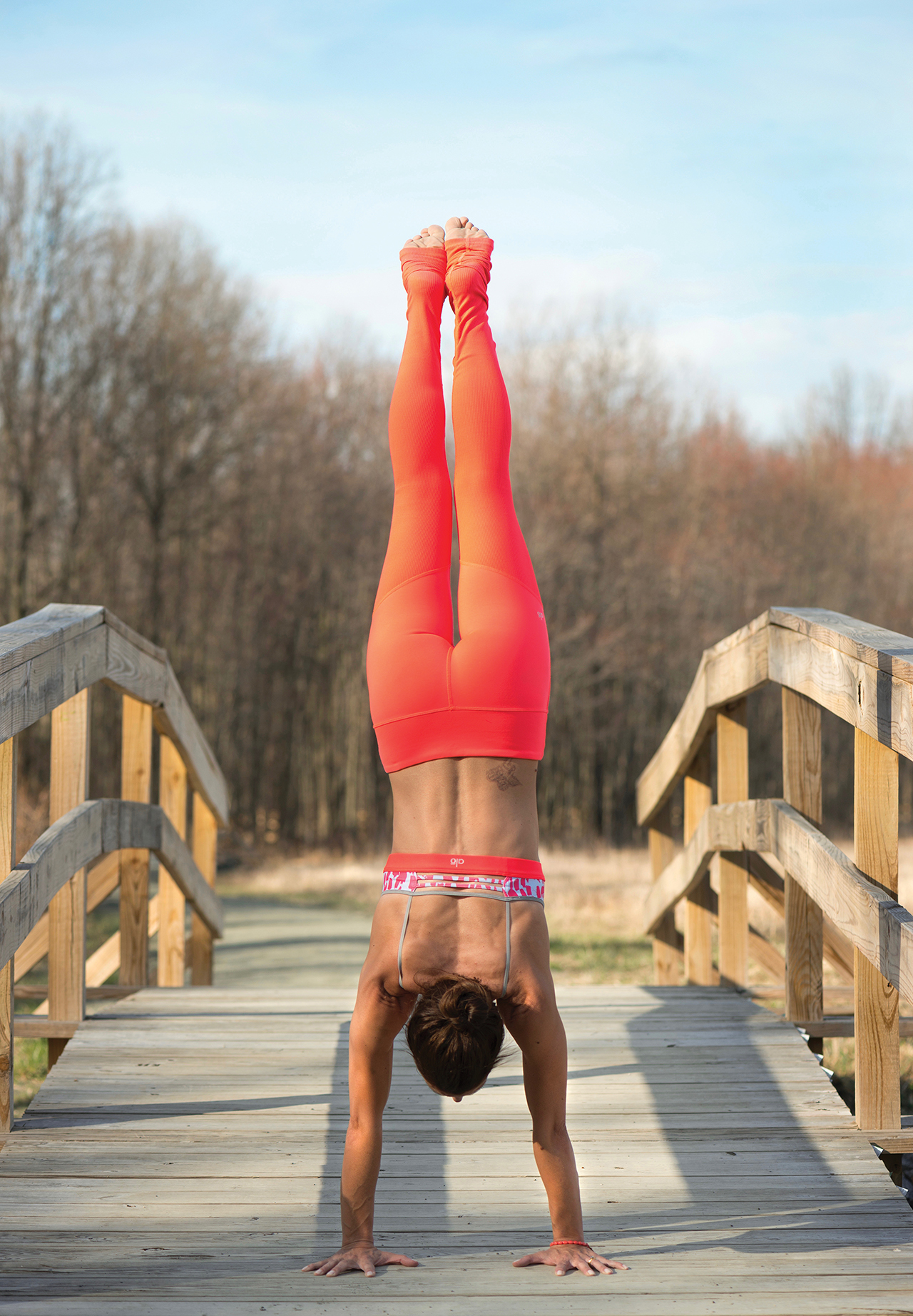
Cathy Madeo used yoga to get into the best shape of her life, performing poses more precisely and for longer periods with each session.
A Simplified Approach
There are many different styles of yoga and some boost your fitness more than others. Normally the more athletic styles are based on Ashtanga and Vinyasa, but there are plenty of variations out there and instructors tend to borrow freely between styles. In general, power and strong yoga classes are going to require more from you athletically than gentle and restorative ones do. No matter what the type, with yoga you progress by holding a pose longer, by holding it with better form, or by moving on to a more advanced version of the pose. “Practicing every day pays off,” says Madeo. “Changing your body requires consistency.”
After being away from yoga for a while, Madeo came back to it a year and a half ago. “I was in pretty bad shape—I couldn’t even touch my toes,” she says. “I started doing yoga twice a day every day, and in 3 months my body completely transformed. I’ve never felt so fit.” She says she got strong and stayed flexible by focusing on the little steps that enabled her to do more advanced yoga postures. She combined the steps into larger workout sets, for instance holding plank pose for a minute four times then doing 20 chaturanga push-ups. In the process of developing this conditioning plan, she shifted the way she thought about teaching yoga.
“You have to have a certain amount of flexibility and strength to do a posture properly, but you can do it as optimally as you’re able, and then do other things to build up to it.” Madeo likes to break down challenging postures, arm balances, and inversions so they aren’t so daunting. Holding your body up while being keenly aware of your alignment and moving from one position to another takes a lot of stamina and focus.
“Practicing yoga is like playing an instrument in that you can always learn more and become more skilled at it.”
Adding It Up
“When it comes to exercise, we’re conditioned to think that a numeric value will equal success,” says Madeo, who will be opening a new yoga studio in Princeton this May. While exercise is often portrayed as a simple equation, being fit isn’t as simple as staying on the right side of calories in and calories out or religiously doing a certain number of lifting reps in a certain order. And when it comes to yoga, fitness may be measured differently, but still have the same result.
Just ask Fischer, who still wears the Fitbit she looked at obsessively in her gym-going days. “My Fitbit doesn’t know what I’m doing half the time because it doesn’t really track yoga. But I feel so fit and free that I don’t care.” She recently got a runner’s high from an intense yoga session. “I was supercharged because I held a difficult pose longer than I had before,” she says. “I hadn’t felt anything like it ever before.”
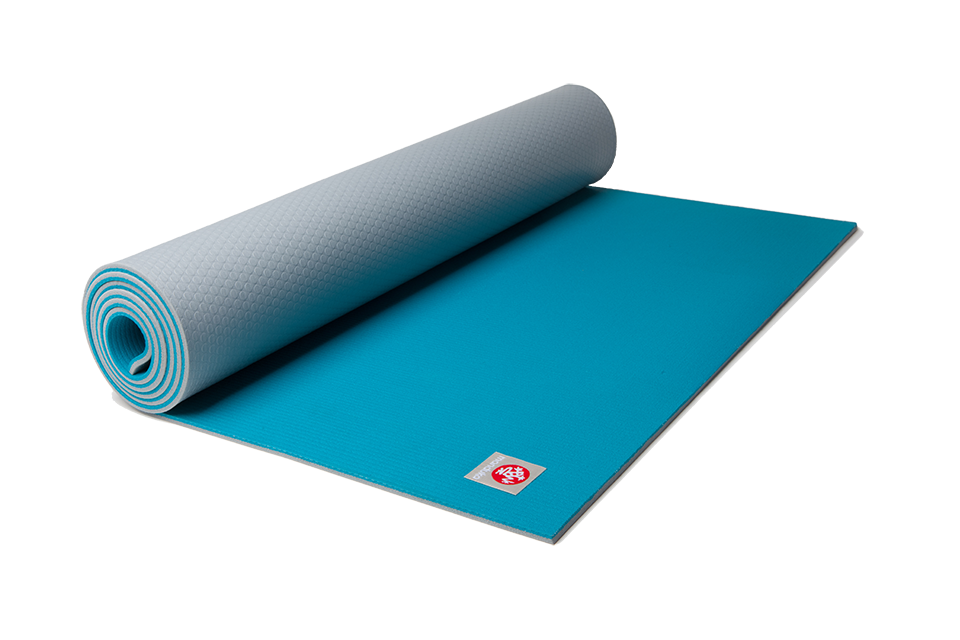
Five Items to Help You Get Your Yoga On
- It’s a hefty investment for a yoga mat, but the Manduka Pro is built to last, says Cathy Madeo. “I’ve had the same Manduka mat for 11 years—it’s worth every penny.”
- The Dharma Yoga Wheel is specifically designed to increase your spinal flexibility, which isn’t an easy thing to do.
- You may not see it in many studios, but Cathy says the Infinity Strap is perfect for increasing flexibility and range of movement. “It can be used to challenge your strength by putting it around the triceps in handstand and arm balances,” Cathy says.
- Cathy recommends Manduka Cork Blocks, which she uses to do exercises that lift the body off the floor. “The blocks provide an added lift, and the sturdy cork makes them more stable.”
- Lavender is an adaptogen, which can help the body adapt to stress or imbalances. Try defusing it into an essential oil to accompany your yoga.




